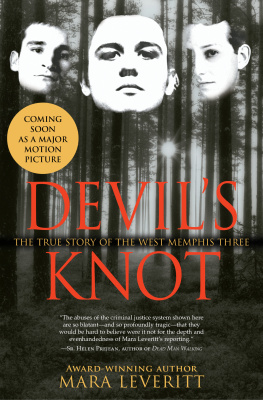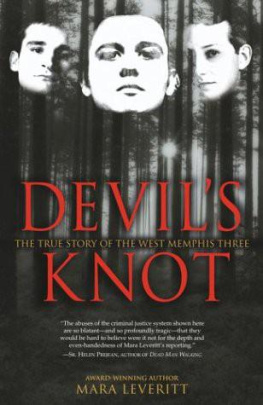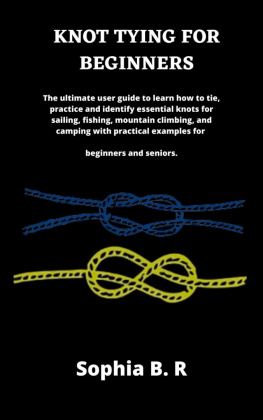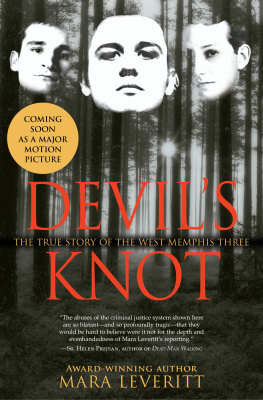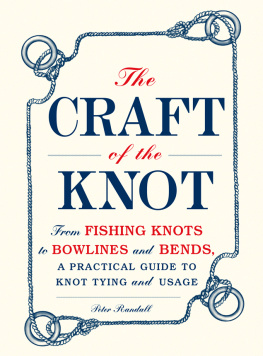Mara Leveritt - Devils Knot
Here you can read online Mara Leveritt - Devils Knot full text of the book (entire story) in english for free. Download pdf and epub, get meaning, cover and reviews about this ebook. year: 2014, publisher: Simon and Schuster, genre: Detective and thriller. Description of the work, (preface) as well as reviews are available. Best literature library LitArk.com created for fans of good reading and offers a wide selection of genres:
Romance novel
Science fiction
Adventure
Detective
Science
History
Home and family
Prose
Art
Politics
Computer
Non-fiction
Religion
Business
Children
Humor
Choose a favorite category and find really read worthwhile books. Enjoy immersion in the world of imagination, feel the emotions of the characters or learn something new for yourself, make an fascinating discovery.
- Book:Devils Knot
- Author:
- Publisher:Simon and Schuster
- Genre:
- Year:2014
- Rating:4 / 5
- Favourites:Add to favourites
- Your mark:
- 80
- 1
- 2
- 3
- 4
- 5
Devils Knot: summary, description and annotation
We offer to read an annotation, description, summary or preface (depends on what the author of the book "Devils Knot" wrote himself). If you haven't found the necessary information about the book — write in the comments, we will try to find it.
Devils Knot — read online for free the complete book (whole text) full work
Below is the text of the book, divided by pages. System saving the place of the last page read, allows you to conveniently read the book "Devils Knot" online for free, without having to search again every time where you left off. Put a bookmark, and you can go to the page where you finished reading at any time.
Font size:
Interval:
Bookmark:
PRAISE FOR DEVILS KNOT
Devils Knot becomes the best horror novel youve ever read, one of those that leave you wondering what new sick dread might be lying in wait on the next page.... The monster Leveritt reveals in the end, however, is more terrifying than even the fork-tailed bogeymen conjured by West Memphis police and prosecutors to fit their crime. What Leveritt reveals to us is the most horrible fiend a rational person can imagine when matters of life and death are at stake: the Specter of Doubt.
Arkansas Times
An affecting account of a controversial trial.... Leveritts carefully researched book offers a riveting portrait of a down-at-the-heels, socially conservative rural town with more than its share of corruption and violence.
Publishers Weekly
Well written in descriptive language, [ Devils Knot ] is an indictment of a culture and legal system that failed to protect children as defendants or victims. Highly recommended.
Library Journal
The chronology [of Devils Knot ] is the first time all elements of the case have been assembled in one narrative, which offers surprises, even for those familiar with the events. As such, it is a true public service.
Arkansas Democrat Gazette
Thank you for downloading this Atria Books eBook.
Join our mailing list and get updates on new releases, deals, bonus content and other great books from Atria Books and Simon & Schuster.
C LICK H ERE T O S IGN U P
or visit us online to sign up at
eBookNews.SimonandSchuster.com

To LSB, with love and gratitude
I thank my beloved family; my many generous friends; the filmmakers, musicians, and other artists who have recognized this storys importance; the reporters whose accounts have contributed to this book; the public officials who provided information and access to records; the lawyers who explained aspects of the case; and everyone who granted me interviews. I thank, in particular, Sandra Dijkstra, Wendy Walker, Tracy Behar, Judith Curr, Ron Lax, Dan Stidham, Burk Sauls, Grove Pashley, Kathy Bakken, Stan Mitchelland, of course, the inmates whose story this is.
Many of the figures in this book were juveniles when the key events took place. Others were on the cusp of adulthood. One or two had recently reached their majority. It is customary in reporting events involving children to refer to them by their first names. I have tried, in general, to do this. The ages of two of the accused, as well as many of the witnesses, were factors in the events related here. I felt that it would distort the story to refer to the children in it as though they were adults, though most were treated as adults by the legal system.
Three teenagers figure at the center of this book. Although one of them had recently observed his eighteenth birthday at the time this book begins, I opted to refer to all three consistently by their first names.
Because of the attention this case has receivedand the further scrutiny I believe it deservesI have written it on two levels. The text tells the story. The endnotes deepen it.
Occult. 1. Hidden (from sight); concealed (by something interposed); not exposed to view. 2. Not disclosed or divulged, privy, secret; kept secret; communicated only to the initiated. 3. Not apprehended, or not apprehensible, by the mind; beyond the range of understanding or of ordinary knowledge; recondite, mysterious. 4. Of the nature of or pertaining to those ancient and medieval reputed sciences (or their modern representatives) held to involve the knowledge or use of agencies of a secret and mysterious nature (as magic, alchemy, astrology, theosophy, and the like); also treating of or versed in these; magical, mystical.
Oxford English Dictionary
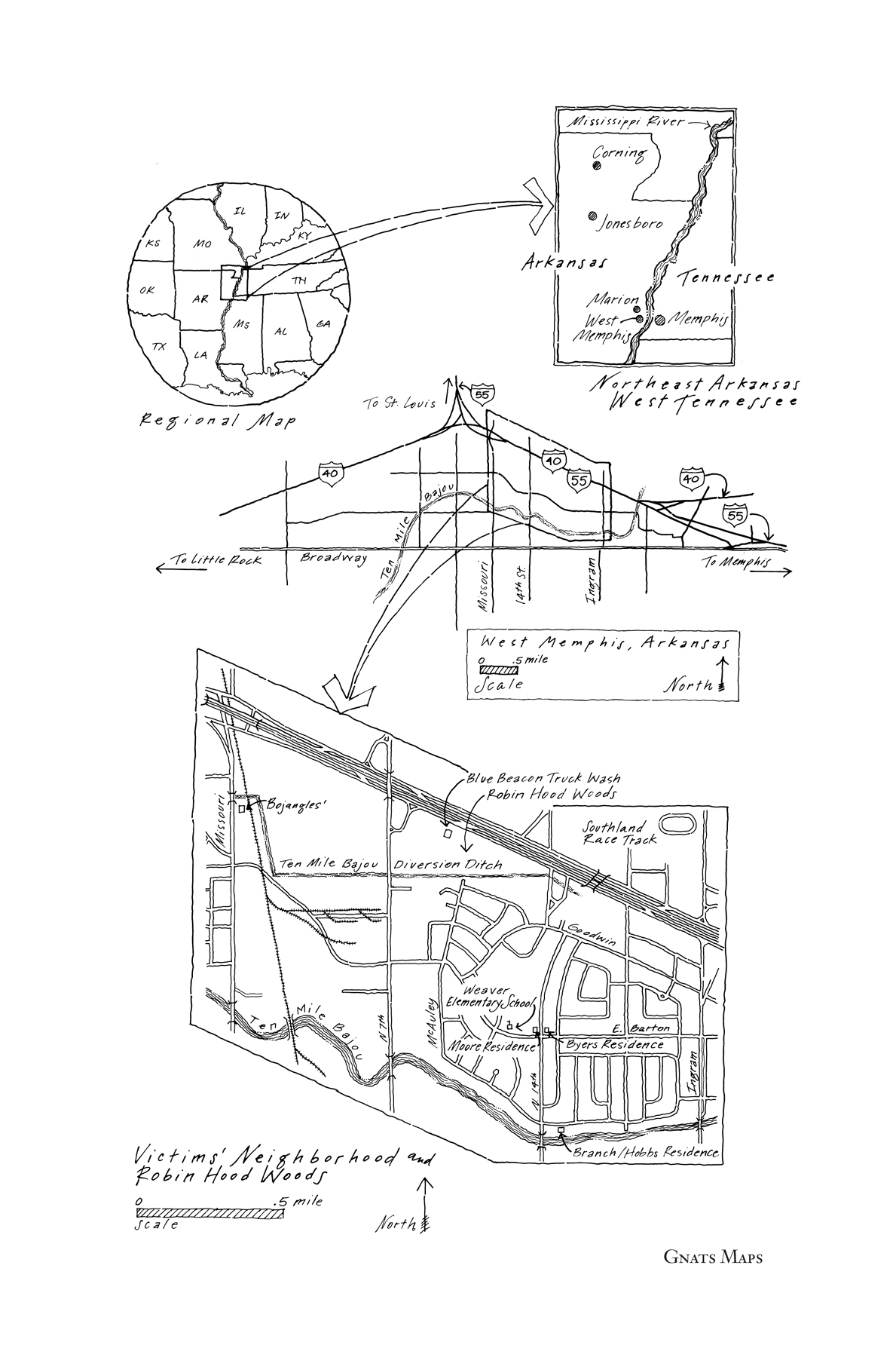
W ERE THE W EST M EMPHIS trials witch trials?
Had a jury sentenced someone to death based on nothing more than childrens accusations, confessions made under pressure, and prosecutors arguments linking the defendants to Satan?
Were the 1994 trials in Arkansas like those in Salem three centuries ago?
These were the questions that gave rise to this book. These, and a couple more:
If talk of demons had diverted reason, how had things gone so awryin the United States of America, at the end of the twentieth centurybefore not just one jury but two, in trials where lives were at stake? And if something so terrible had happened, why ?
Modern readers might think it impossible that prosecutors in a murder case, facing a dearth of factual evidence, would build their argument for execution on claims that the accused had links to the occult. Educated readers might recoil from the idea that prosecutors would cite a defendants tastes in literature, music, and clothing to support such an archaic theory. Even fans of lurid fiction might find it a stretch to believe that a prosecutor in this day and age would point to a defendant and say, Theres not a soul in there.
Yet in the spring of 1994, that is what seemed to have happened. A teenager was sentenced to death. His two younger codefendants were dispatched to prison for life.
Impossible.
And yet the police insisted that their case was strong. The judge who presided at the trials said that they had been fair. And in two separate opinions, the justices on the Arkansas Supreme Court agreed. Unanimously.
Outside the state, however, news of the unusual trials began to attract attention. A documentary released in 1996 raised widespread concern. A Web site was dedicated to the case, and its founders unfurled the phrase Free the West Memphis Three.
Arkansas officials dug in. As criticism mounted, police and state officials insisted that the film had been misleading. They pointed out that twenty-four jurors had sat through the trials, had heard and seen all the evidence, and had found the teenagers guilty. They said that anyone who bothered to examine what really had happened in the case, rather than form opinions based on movies and a Web site, would conclude, as had the jurors, that justice had been served.
As an Arkansas reporter focusing on crime and the courts, I began to see this as a historic case. The dispute needed to be resolved. Either the out-of-state critics were wrong, in which case the Free the West Memphis Three crowd could all get on with their lives, or something similar to what happened at Salem had indeed occurred againduring my lifetime and in my own state.
I decided to take my states officials up on their challenge. I would look at what really had happened. I would interview participants, read thousands of pages of transcripts, touch every piece of evidence in storage, and report faithfully on what I found, regardless of whom it supported. And if what I found in West Memphis resembled what had happened in Salem, I was prepared to look further. We assume that secularism, as well as advances in science and law, distances us from colonial America. If it appeared, as critics of the West Memphis case charged, that presumably rational processes had given way to satanic allusions, it was fair to ask both how and why such a thing had happened.
A T 7:41 P.M. ON M AY 5, 1993, a full moon rose behind the Memphis skyline. Its light glinted across the Mississippi River and fell onto the midsized Arkansas town aspiringly named West Memphis. Sometime between the rising of that moon and its setting the next morning, something diabolical would happen in West Memphis. Three eight-year-old boys would vanish, plucked off the streets of their neighborhood by an unseen, murderous hand. Under the glare of the next days sun, police would discover three young bodies. They would be pullednaked, pale, bound, and beatenfrom a watery ditch in a patch of woods alongside two of Americas busiest highways. But the investigation would unfold in shadow. Why had one of the boys been castrated? How to account for the absence of blood? Why did the banks of the stream look swept clean? The police would stumble for weeks without cluesuntil the moon itself became one.
Next pageFont size:
Interval:
Bookmark:
Similar books «Devils Knot»
Look at similar books to Devils Knot. We have selected literature similar in name and meaning in the hope of providing readers with more options to find new, interesting, not yet read works.
Discussion, reviews of the book Devils Knot and just readers' own opinions. Leave your comments, write what you think about the work, its meaning or the main characters. Specify what exactly you liked and what you didn't like, and why you think so.

